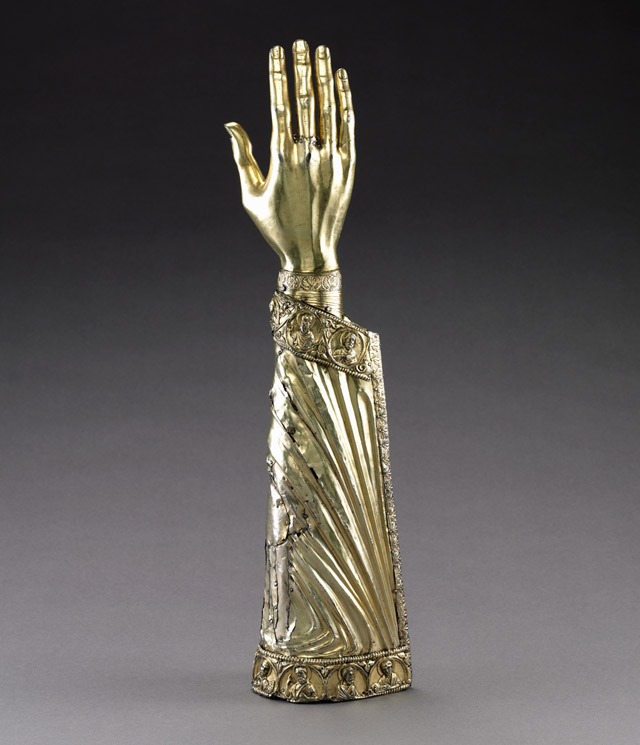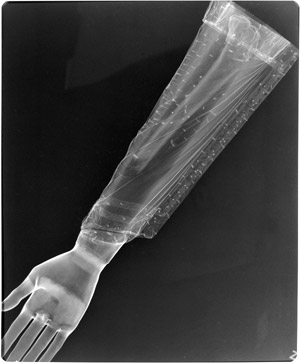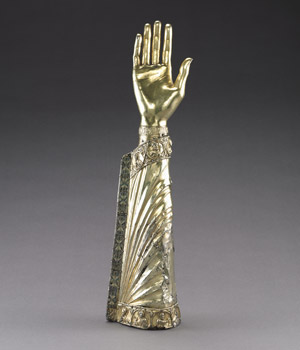Arm Reliquary of the Apostles
The Cleveland Museum of Art, gift of the John Huntington Art and Polytechnic Trust

 Select the image to zoom
Select the image to zoom
This reliquary belongs to a class of objects often referred to as body-part, shaped, or "speaking" reliquaries. Imitating the form of a clothed lower arm with an outstretched right hand, it gives visual expression to the very body part it contains, namely, the ulna bone—part of the lower arm—of an unidentified saint. Correspondences between the shape of a reliquary and its contents, however, are not the rule. Some arm reliquaries contain the remains of not just one, but several saints. Others hold relics from different parts of a saint's body, or contact relics. The popularity of arm reliquaries from the twelfth century onward must be considered a result of their usefulness as liturgical props, which allowed clerics to animate a saint's body during liturgical celebrations and processions. In this way, the saint could literally bless, touch, and heal the faithful with his own hand.
Named for a series of bust-length figures of apostles that decorate the upper and lower borders of the liturgical vestment, in which the arm is "dressed," the arm is one of the finest reliquaries from the treasury of St. Blaise in Braunschweig. While two arm reliquaries are already recorded in an inventory of 1482—namely, those of Sts. Martin and Eustace—the iconographic program of the Cleveland reliquary may suggest that it was made to contain the relic of an apostle. In fact, Duke Henry the Lion (r. 1142–80), during whose reign the reliquary was likely made, is known to have received several arm relics of apostles as gifts from Emperor Manuel I (r. 1143–80) in Constantinople in 1173. Since Henry donated at least two arm reliquaries—those of Sts. Theodore and Innocence—to St. Blaise's treasury, his patronage of this arm reliquary seems indeed likely.







